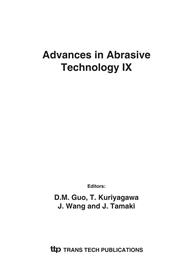p.303
p.309
p.315
p.323
p.329
p.335
p.341
p.347
p.353
Three-Dimensional Simulation of Liquid-Solid Two-Phase Flow Inside the Abrasive Water Jet Nozzle
Abstract:
Three dimensional simulation of the velocity field of solid-liquid two-phase flow inside the abrasive water jet nozzle was studied by the computational fluid dynamics software (CFD). The complicated velocity field and vectorgraph of the flow in the abrasive water jet nozzle was obtained. In the course of the simulation, the Syamlal-O’Brien model was used to decide the inter-phase drag exchange coefficient. The velocity vectorgraph simulation results indicate that the highest flow speed is occurred at the inlet of the mixing chamber and the flow speed is gradually decreased along the direction of the nozzle axis and got to the lowest speed at the outlet of the nozzle. And also the flow speed in the cross section of the mixing chamber is gradually reduced along the radial direction of the cross section and got to the lowest speed in the verge of the chamber. The comparison of simulation result for the velocity field of water and abrasive exhibits that the velocity of water in the mixing chamber is three or four times higher than that of abrasive.
Info:
Periodical:
Pages:
329-334
Citation:
Online since:
January 2007
Authors:
Price:
Сopyright:
© 2007 Trans Tech Publications Ltd. All Rights Reserved
Share:
Citation:


